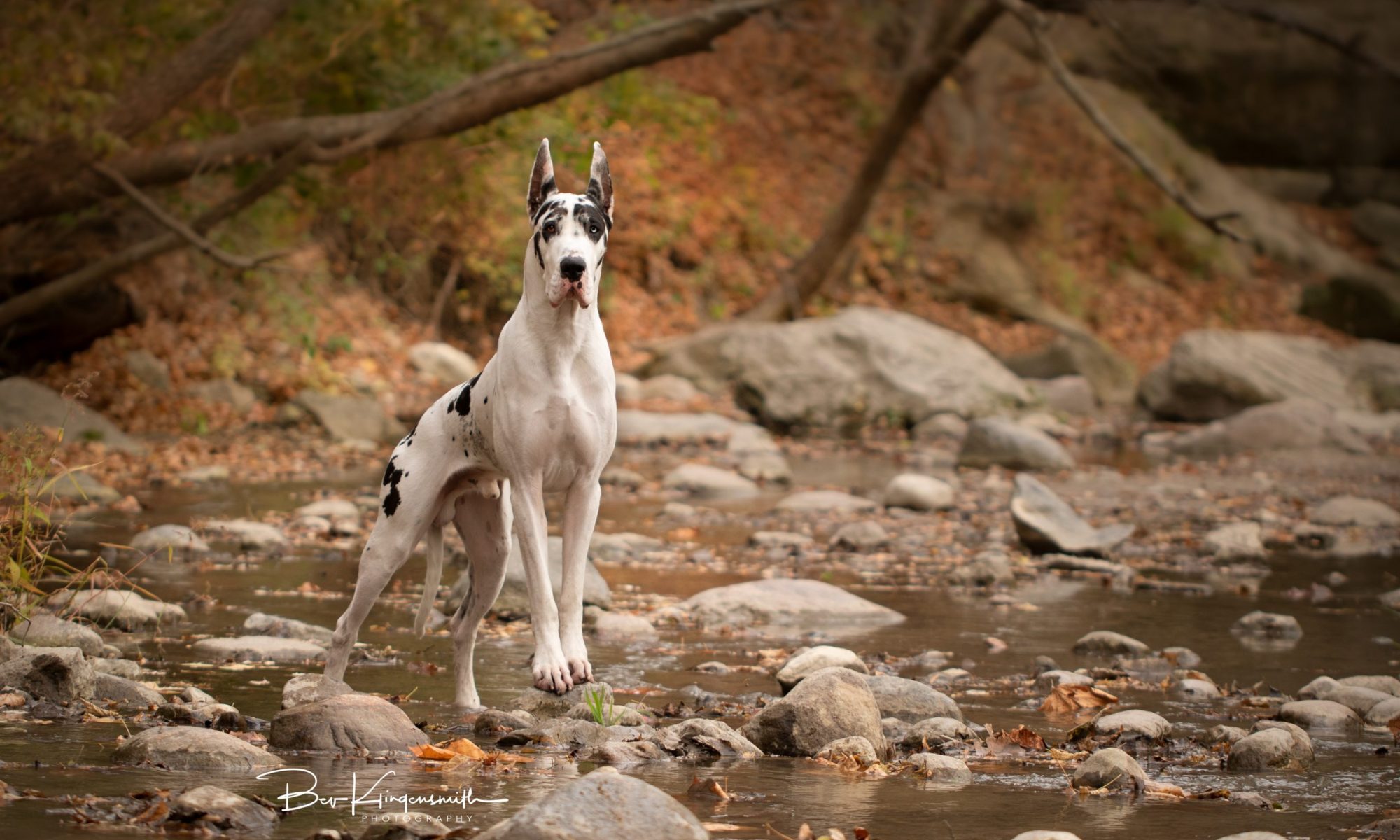Most prospective puppy buyers are not looking for a “show dog”, they merely want a companion to cherish. So why should it matter if your breeder shows?
Think of our breed standard like a blue print, depicting the most sound structure, along with some decorative aspects, which make each breed unique.
The more deviations from the blueprint, the weaker the structure becomes. Those weaknesses lead to an earlier breakdown of the body, making it difficult for the dog’s frame to support them for the entirety of their lives.
Along with the functional structure, detailed in our blueprint, are the aesthetic perspectives, which might seem unimportant at first. However, if you are looking for a purebred dog, step back and ask yourself what draws you to that specific breed. There are unique characteristics that make a Dane stand apart from a Lab or a Chihuahua. The standard for Danes, for instance, details a minimum height requirement and a recognizable head piece (you can instantly recognize the breed from a quick glance at a nice Dane head!).
Go read your breed standard. Since I am a Dane person, here is the link to the Great Dane standard. By merely reading those words, do you instantly feel you are an expert? Would you be able to identify, for instance, correct shoulder angulation? Those type of things are not easily learned by reading a standard, but rather working with mentors and actually seeing examples in the flesh.
Being exposed to lots of different good examples of the breed is critical. Seeing these other dogs also allows for better choices when it comes to selecting good breeding partners, not just whatever you have available.
There is a term called “kennel blindness”, which means that it might be difficult for some breeders to see the faults in their own dogs. Some breeders can even begin to think that their dogs’ faults are actually correct, because that is all they are used to seeing.
Having your own dogs judged by unbiased and knowledgeable people affords valuable feedback to a breeder.
There is much to be said for the connection to your peers as well. Learning from the mistakes and successes of others. There is no need to reinvent the wheel with each litter, at the expense of those puppies and their future owners. Rely on mentors and friends.
A common misconception is that when a show breeder produces all “show dogs”, which are some unique beast. As a breeder who shows, I will tell you that my dogs are always my PET first. Showing is just something they occasionally do on a weekend. That said, even in the best of litters, not every pup is destined for the show ring. Only a few puppies from each litter will be deemed “show potential”, going on to be shown and possibly bred. The rest of the pups will be placed as pets, meaning they will not be shown or bred. They have the same love and commitment poured into them as their show-ring bound siblings. And, a pet puppy from a good breeder is much closer to the breed standard than the best of pups from a bad breeder!
Even if you have zero interest showing, if you want to purchase a purebred dog, seek out a breeder who does show their dogs and is involved in the canine community.
Not all breeders who show are responsible, but all responsible breeders show in some proving sport (conformation, field trials, etc.).
Not all dogs being bred are champions, but when you look at a pedigree, you should see several champions “up close”. A couple champions, several generations back, is not impressive.
